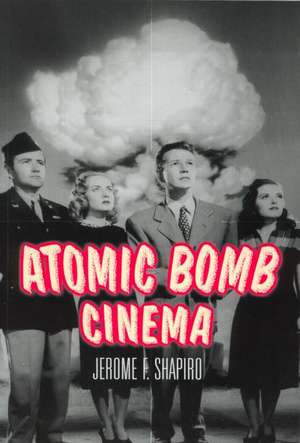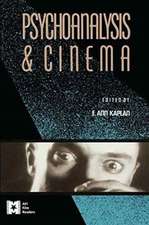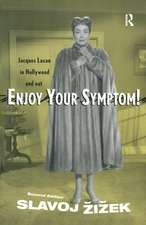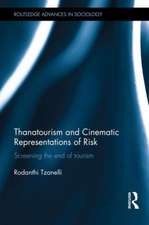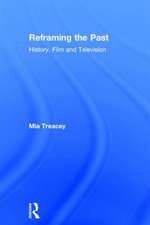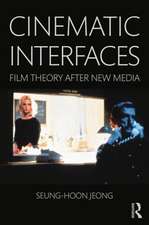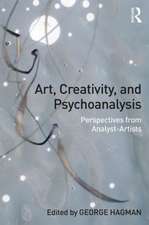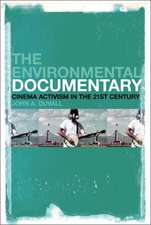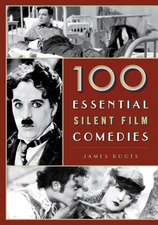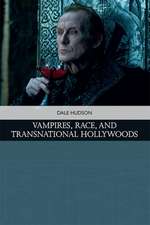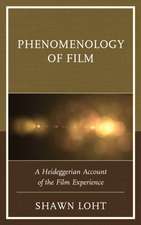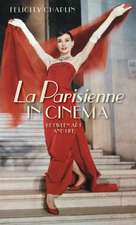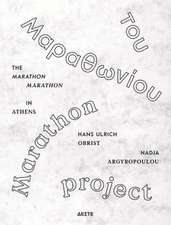Atomic Bomb Cinema: The Apocalyptic Imagination on Film
Autor Jerome F. Shapiroen Limba Engleză Paperback – 7 dec 2001
According to Shapiro, a "Bomb film" is never simply an exercise in ideology or paranoia. He examines hundreds of films like Godzilla, Dr. Strangelove, and The Terminator as a body of work held together by ancient narrative and symbolic traditions that extol survival under devastating conditions. Drawing extensively on both English-language and Japanese-language sources, Shapiro argues that such films not only grapple with our nuclear anxieties, but also offer signs of hope that humanity is capable of repairing a damaged and divided world.
www.atomicbombcinema.com
| Toate formatele și edițiile | Preț | Express |
|---|---|---|
| Paperback (1) | 380.39 lei 6-8 săpt. | |
| Taylor & Francis – 7 dec 2001 | 380.39 lei 6-8 săpt. | |
| Hardback (1) | 1016.18 lei 6-8 săpt. | |
| Taylor & Francis – 7 dec 2001 | 1016.18 lei 6-8 săpt. |
Preț: 380.39 lei
Nou
Puncte Express: 571
Preț estimativ în valută:
72.80€ • 79.05$ • 61.15£
72.80€ • 79.05$ • 61.15£
Carte tipărită la comandă
Livrare economică 22 aprilie-06 mai
Preluare comenzi: 021 569.72.76
Specificații
ISBN-13: 9780415936606
ISBN-10: 0415936608
Pagini: 404
Ilustrații: 8 color images
Dimensiuni: 152 x 229 x 22 mm
Greutate: 0.55 kg
Ediția:1
Editura: Taylor & Francis
Colecția Routledge
Locul publicării:Oxford, United Kingdom
ISBN-10: 0415936608
Pagini: 404
Ilustrații: 8 color images
Dimensiuni: 152 x 229 x 22 mm
Greutate: 0.55 kg
Ediția:1
Editura: Taylor & Francis
Colecția Routledge
Locul publicării:Oxford, United Kingdom
Cuprins
Introduction: Vexing questions and atomic bomb cinema
1:1895 to 1945: Prototypical bomb films
2:1945 to 1949: The initial elation after Hiroshima and Nagasaki
3:1950 to 1963: Part I: A complex growth industry
4:1950 to 1963: Part II: Cold war fantasies
5:1964 to 1979: Losing faith in social institutions
6:1980 to 1989: The Reagan era
7:1990 to 2001: The post-cold war years
8:1945 to 2001: Japan's atomic bomb cinema
Conclusion: Demonic cinema
Notes
Selected Bibliography
Filmography
Index
1:1895 to 1945: Prototypical bomb films
2:1945 to 1949: The initial elation after Hiroshima and Nagasaki
3:1950 to 1963: Part I: A complex growth industry
4:1950 to 1963: Part II: Cold war fantasies
5:1964 to 1979: Losing faith in social institutions
6:1980 to 1989: The Reagan era
7:1990 to 2001: The post-cold war years
8:1945 to 2001: Japan's atomic bomb cinema
Conclusion: Demonic cinema
Notes
Selected Bibliography
Filmography
Index
Recenzii
"Shapiro's treatise provides an original, ambitious, contentious, compelling hybrid of searching film scholarship, humanist mysiticsm, autobiography, and polemic.
In parts diatribe, insigh, anedote, and polemic, Atomic Bomb Cinema performes a kind of explosion." -- Akira Mizuta Lippit University of California, Irvine Journal of Japanese Studies
"Besides employing his own considerable analytical powers, Shapiro draws on the work of Psychologists, scientists, novelists and film critics and will beet be appreciated by film scholars synecdochical and anagogic." -- Library Journal
"In an age of new anxiety and the fear of catastrophic terrorism with nuclear, biological, and chemical weapons and new instructions from the federal government on civil defense, a timely new book, Jerome F. Shapiro's Atomic Bomb Cinema offers a rich historical analysis of the cultural consequences of apocalyptic anxiety on film... I highly recommend the book to anyone interested in American studies, political science, and cultural studies in general." -- Journal of American History
"Shapiro writes well...what emerges clearly is that there has been a relatively constant release of atomic bomb films over the entire period Shapiro addresses. Atomic Bomb Cinema discusses their importance to the apocalyptic imagination admirably. Technology and Culture January 2003."
In parts diatribe, insigh, anedote, and polemic, Atomic Bomb Cinema performes a kind of explosion." -- Akira Mizuta Lippit University of California, Irvine Journal of Japanese Studies
"Besides employing his own considerable analytical powers, Shapiro draws on the work of Psychologists, scientists, novelists and film critics and will beet be appreciated by film scholars synecdochical and anagogic." -- Library Journal
"In an age of new anxiety and the fear of catastrophic terrorism with nuclear, biological, and chemical weapons and new instructions from the federal government on civil defense, a timely new book, Jerome F. Shapiro's Atomic Bomb Cinema offers a rich historical analysis of the cultural consequences of apocalyptic anxiety on film... I highly recommend the book to anyone interested in American studies, political science, and cultural studies in general." -- Journal of American History
"Shapiro writes well...what emerges clearly is that there has been a relatively constant release of atomic bomb films over the entire period Shapiro addresses. Atomic Bomb Cinema discusses their importance to the apocalyptic imagination admirably. Technology and Culture January 2003."
